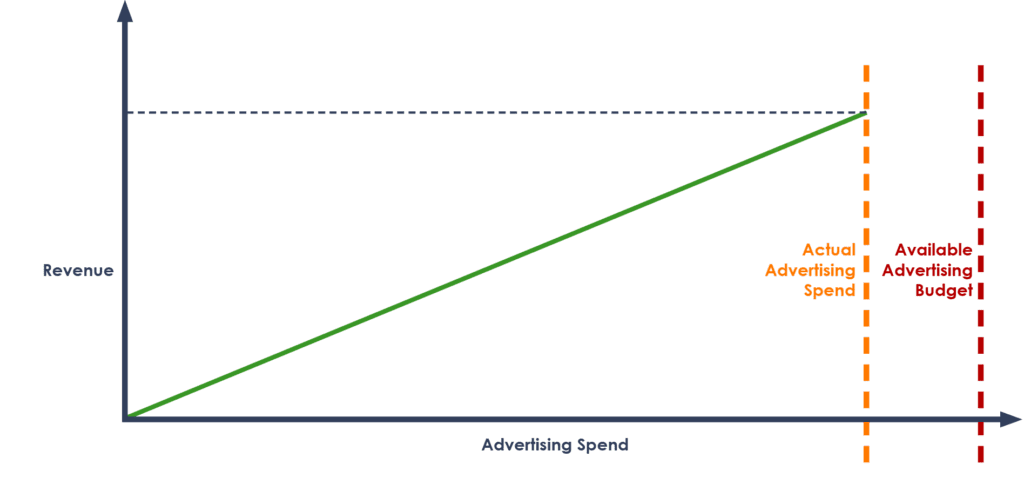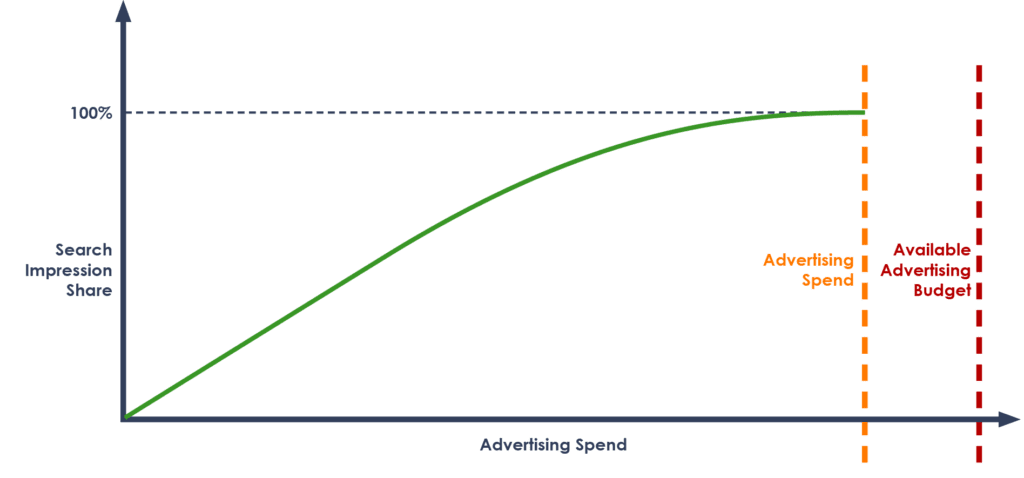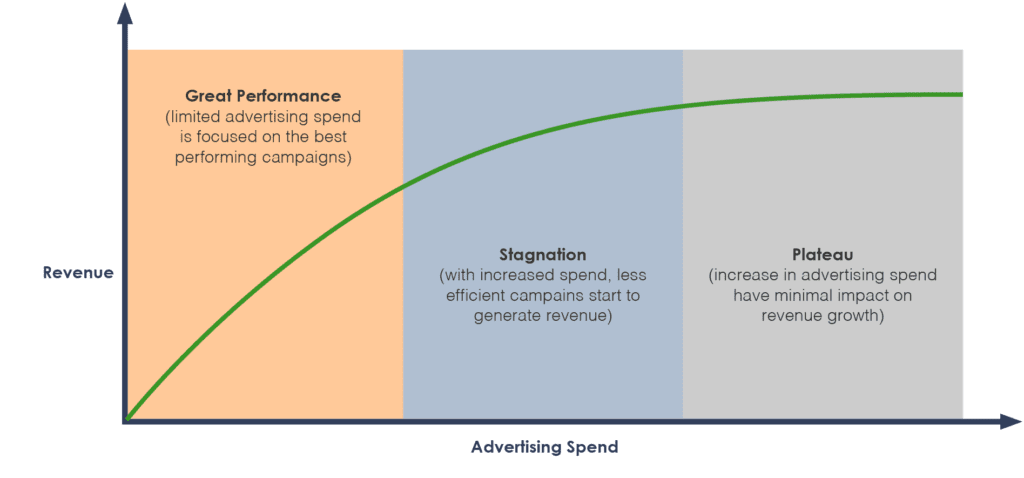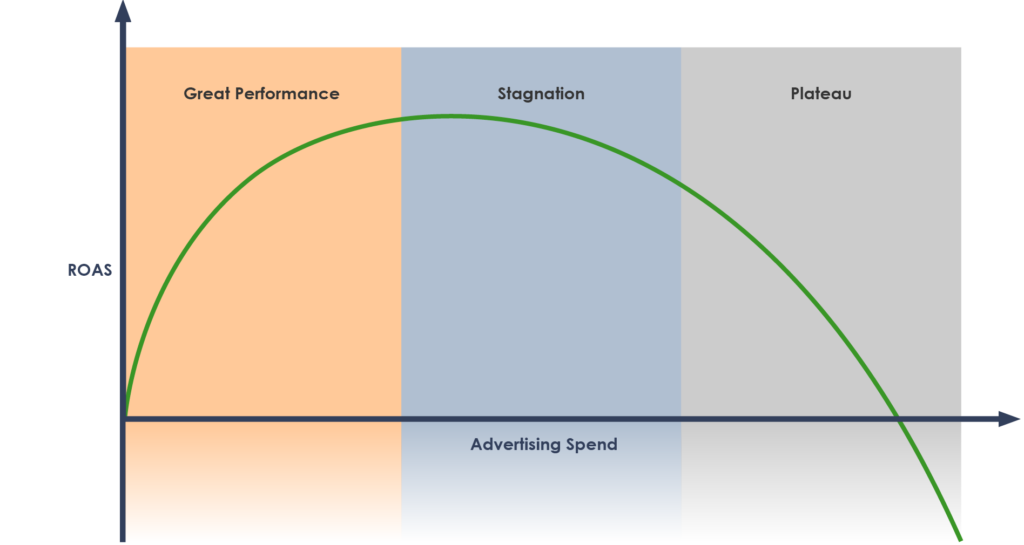Paid Search is a great advertising channel to promote products and services. But there are some limitations when it comes to scalability.
Let’s review an example based on one e-commerce campaign. Assuming this campaign works extremely well and generates decent revenue volume with great Return on Advertising Spend (ROAS,) it makes sense to keep boosting activity in this campaign by increasing bids and daily budgets and, as result, generate more revenue. But you might notice that spend could reach and maintain a certain level (even when daily budget is much higher and not limiting campaign activity).

This type of situation could happen if the campaign has reached 100% impression share. Basically, this campaign captured all available search volume within targeted geographical region. It’s a very common situation for niche products and services where search volume is very limited.

When ability to invest more in existing campaign is limited we should explore other alternatives. For example:
- Expanding keyword lists to new keywords variations (based on historical data and additional keyword research)
- Expanding campaign to new topics
- Expanding geo-targeting
- Building new campaigns that focus on other topics and targeting
Let’s review a typical account evolution. Over time we expand to new keyword topics, new targeting (device based, geographical locations, etc.), new initiatives (such as RLSA.) Eventually the major expansion opportunities will be covered. Now let’s look at account performance with different advertising spend figures.
With relatively small budgets we want to shift the spend towards the most efficient campaigns. Obviously ROAS in this case would be great (stage ‘Great Performance’ in charts below).
With increased spend we can’t keep boosting the best performing campaigns due to limited search volume (search impression share reaches 100%). So, we should shift our spend towards less efficient campaigns. In this case, overall account performance would start to decline (stage ‘Stagnation’ in charts below).
With further spend increase we continue to deplete available search volume in relatively well performing campaigns and should continue to shift more spend towards less efficient campaigns. As result, with increased spend we see a decline in overall account ROAS. Eventually further increase in advertising spend would have minimal impact on revenue (stage ‘Plateau’ in charts below).

It is important to understand that with increased advertising spend search campaigns usually show diminishing returns. The chart below shows how ROAS would behave with an increase in advertising spend.

Now let’s review possible actions to prepare for possible diminishing returns on advertising spend:
- Based on historical performance data, it’s possible to provide analysis and forecast spend level when ROAS declines below your minimum limit. This analysis can help to understand the potential of your search campaigns.
- Constantly try to explore account expansion opportunities (by using new keyword topics or expanding to new geographical regions) to cover more search volume and reduce the possibility of diminishing returns.
- Get more from existing available search volume by improving click-through-rate, improving user experience on landing pages, improving Quality Score by increasing relevancy.

















